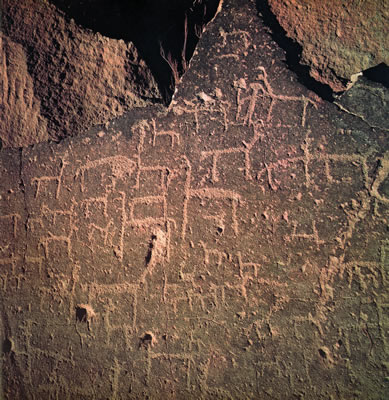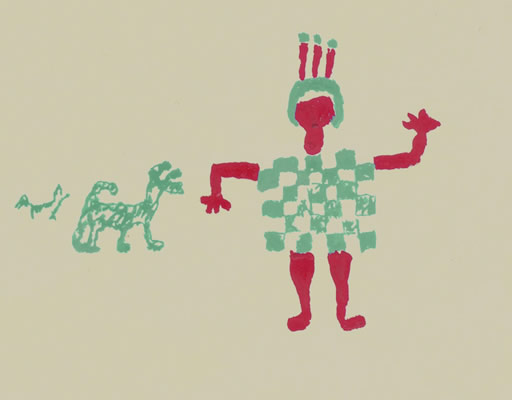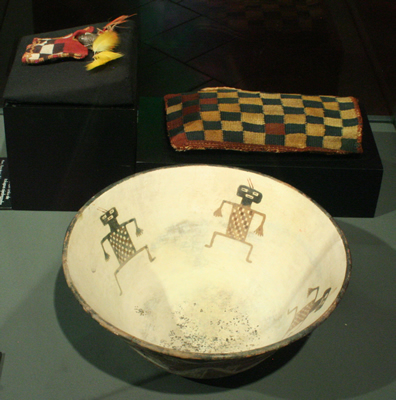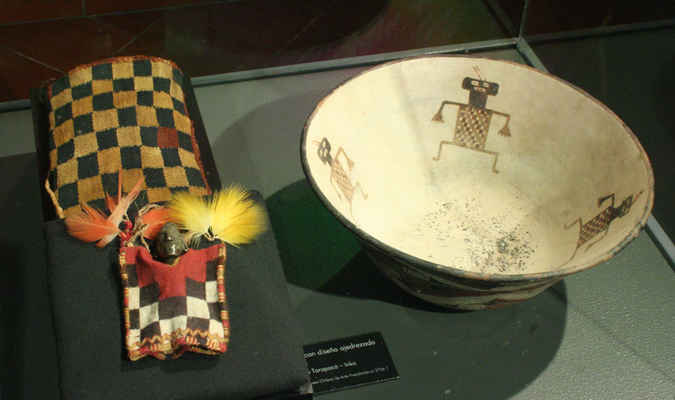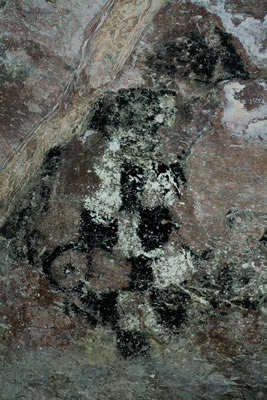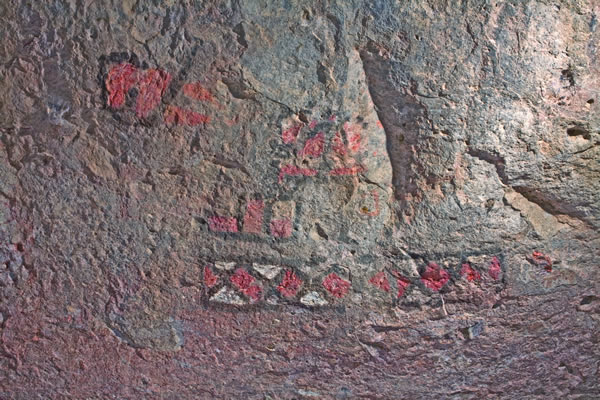Chile under the Inka Empire – 2009
Rock art
The Inka empire used rock art to keep conquered peoples under its dominion
On the outskirts of towns and villages, often alongside Inka roads, in narrow passes, in caves and other places where dangerous spirits were thought to reside, the Inkas ordered that the rocks be painted with depictions of unkus or Andean tunics, or people wearing these tunics. These paintings were part of the rituals through which new peoples were subjugated and incorporated into the Empire. After a local nation had been defeated in battle or persuaded by diplomacy to join the Tawantinsuyu, these images were engraved on the landscape as a lasting reminder of the pledges made by the local chief to the Inka government. Such pictographs are found throughout the Andean region. In the Collasuyu, and particularly in Chile, the depictions show checkered unkus of the kind worn by Inka soldiers. These images of military tunics, painted on rocks in places that the locals considered threatening or supernatural, may have served to dissuade any attempt of rebellion. The pictograph shown is located near Pica and shows a quipu on the left and a warrior with a plumed helmet and checkered tokapu’s tunic on the right. Its purpose was to demonstrate Inka dominion and ensuring at the same time the submission of the people inhabiting this oasis to the Cuzco rulers.




































